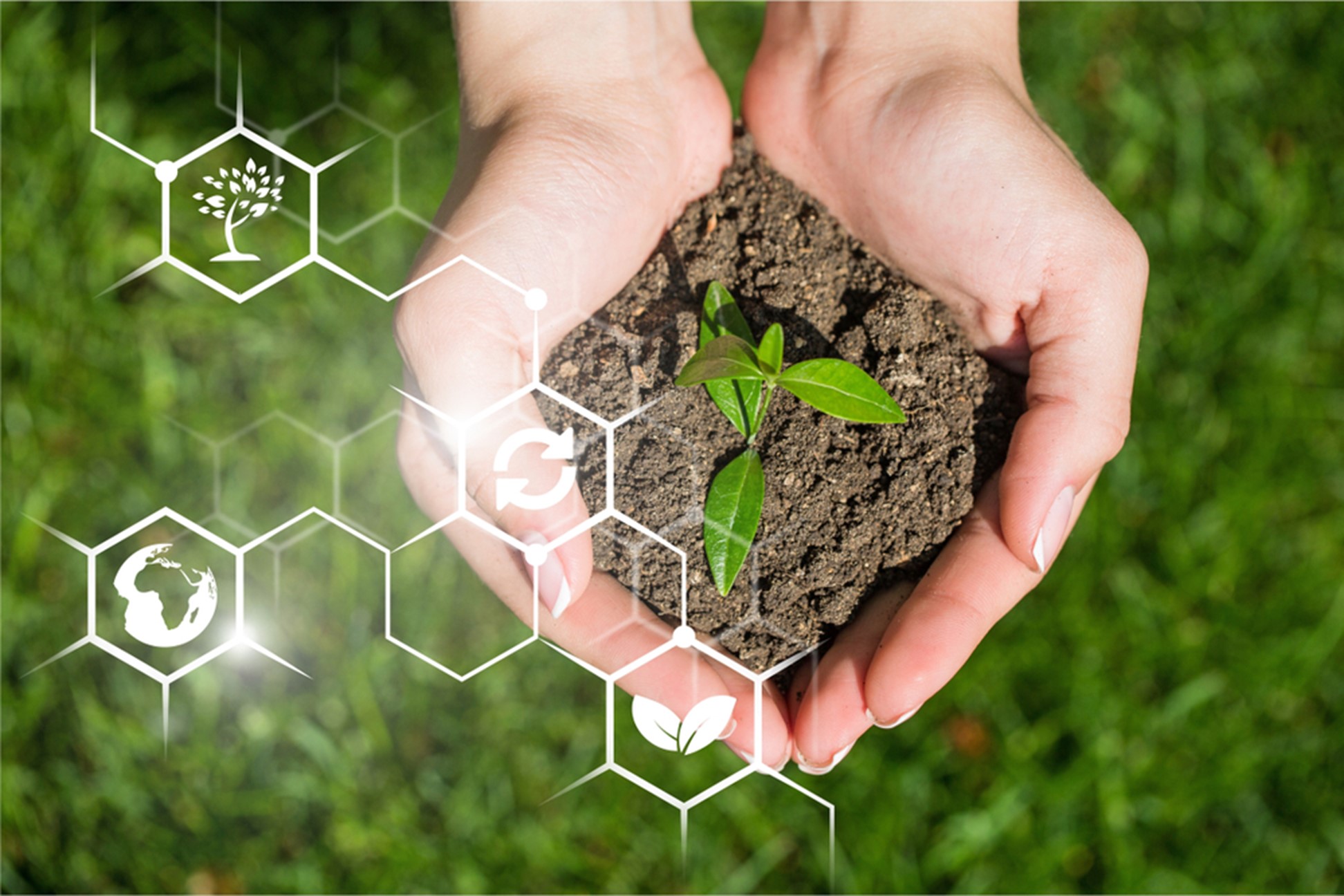Toward a Sustainable Future with Healthy Soils
Soil is a fundamental natural resource that provides services essential for life on the planet. Soils supply major nutrients critical to the production of biomass in plants; they take in, store, transmit, and purify water protecting lands from erosion and regulating the number of nutrients and contaminants contained in water. Being a part of the carbon cycle, soils are key to carbon sequestration removing CO2 from the atmosphere and safely locking it away.
Besides, they represent a complex habitat for billions of microbe and fauna species, maintaining rich biodiversity.

Soil health as key to sustainability
Although soil supports the production of 95% of global food supplies, the importance of keeping it healthy is often overlooked. Intensive agricultural practices exhaust soils, causing farmers to increase fertilizer and pesticide use to meet the yield demand, thus polluting natural resources. That combined with the effects of climate change and weather extremities causes soils to degrade and erode at greater rates.
The resulting loss of topsoil brings about increased exposure of crops to infestations, diseases, and yield losses. Poor-quality soils are incapable of maintaining the water balance, which is detrimental to crop growth, as soil moisture is one of the major indicators of field productivity.
Crop growers, who are both contributors and victims of the massive agricultural land degradation, are increasingly replacing traditional farming with sustainable one to restore and regenerate the soil. A holistic soil-friendly approach includes a variety of time-tested and nascent practices, such as the integration of crops with trees and livestock, the use of biological plant growth agents over synthetic ones, integrated pest management, giving up chemical plant protection agents and microbial inoculants for biological ones, etc.
To optimize the benefits of these soil regeneration strategies, it’s important to use high-quality agricultural supplies from Nutrien Ag or other reliable providers in your area. Crop growers can also check out credible websites and online resources to get more information on enhancing plant health and ways to contribute to higher crop productivity.
Another promising initiative is carbon sequestration which is beneficial to soil and plant health in many ways: not only can it balance soil moisture content and increase water availability to crops but also minimize pollution and make the soil more resilient to external factors.
Indeed, carbon sequestration is a high-potential technology, though it’s still in its early stages of development. There are challenges that need to be addressed before carbon sequestration can be widely implemented, including the cost of capturing and storing carbon dioxide (CO2), the potential for leakage, and the environmental impact of injecting CO2 underground.
But despite these challenges, carbon sequestration could significantly improve soil structure, reduce greenhouse emissions, and mitigate climate change. With ongoing technological advancements, it’s likely to become more cost-effective and widespread.
Satellite technologies for drought and irrigation management
Technology is among the core drivers of sustainability in agriculture. Earth observations from space coming in the form of satellite imagery help to reap bigger crop yields while doing less harm to natural resources.
Soil moisture is one of the important field parameters defining crop growth. Water transports nutrients to the plant roots, so at times of drought, crops suffer from nutrient deficiency and have stunted growth. Optimal soil moisture conditions regulate water absorption by roots and transpiration in leaves, thus determining the extent of dry mass accumulation and yield itself.
That said, satellite technologies are increasingly being used to monitor drought and irrigation management. These advancements can provide valuable information about soil moisture, vegetation health, and water availability, which can be used to mitigate drought and come up with sound irrigation management decisions.
Hence, by leveraging remote sensing science behind satellite data, farmers can get additional insights into the state of their fields for a more effective, eco-friendly crop, soil, and water management. Digital platforms like EOSDA Crop Monitoring facilitate the adoption of innovative sustainable methods by agricultural players who don’t have GIS expertise. It is a source of multiple types of field-related information, including weather forecasts, precipitation, soil moisture, and so on.
Crop growers can get a graph of soil moisture levels, both at the surface and root zone. Comparing it with the vegetation index curve, they can discover the previously hidden trends and correlations between water level and plant development. Historical and current 2-week weather forecasts in the region of interest allow farmers to analyze drought patterns and effectively plan irrigation activities in areas at risk. This way, they can keep soil moisture at an optimal level for normal crop growth.
Another valuable feature of EOSDA Monitoring is the NDMI vegetation index that highlights field areas with an extremely low or high plant water content, which is dependent on the moisture content of soil. On-time detection of flooding risk or water scarcity and an immediate response can save yields and, ultimately, money.
Overall, satellite technologies enhance drought and irrigation management, providing insights into drought conditions and water availability to improve soil health.
Importance of proper soil conditions
Sustainable soil management aims at maintaining and enhancing the productivity and natural functions of soil without affecting biodiversity and related ecosystems.
As of today, there is a multitude of such activities and practices, including:
- Minimizing mechanical damage to the soil by machinery or tillage. Uncontrolled machinery operation can affect the ability of soil to absorb water and limit air supply underground, which altogether may lead to erosion by air or water, flooding, etc.
- Crop rotation and planting cover crops. Both help to prevent the loss of valuable topsoil, which is home to the most nutrients and microorganisms, and a seedbed for seed germination.
- Reintroduction of crop-livestock-forest system. It enhances natural soil fertility by improving nutrient cycling and maintaining soil nutrient content in balance.
- Use of satellite data-enabled software. Additional insights into the state of field soils and crops (such as soil moisture content, plant water content, etc.) make for smarter fertilization, irrigation, and crop management, guiding farmers toward sustainability.
These represent a few of many sustainable soil management strategies. Adopting these practices can help protect soil health and ensure its long-term productivity.
Results of poor soil management
According to the UN, around 40% of all land is already considered degraded, i.e. unsuitable for agriculture and food production. At this rate, the global food crisis will keep intensifying, so poor soil management practices need to be left in the past. They include heavy tillage, slash and burn, and uncontrolled pesticide use, which altogether provokes the loss of topsoil, pollution of soil, water, and air, drop in productivity, and are among the factors affecting soil moisture content.
Therefore, a sustainable holistic approach is required to preserve the remaining soils and their productivity. By keeping the information mentioned above in mind, crop growers can ensure your production’s sustainable future with healthy soils.



















